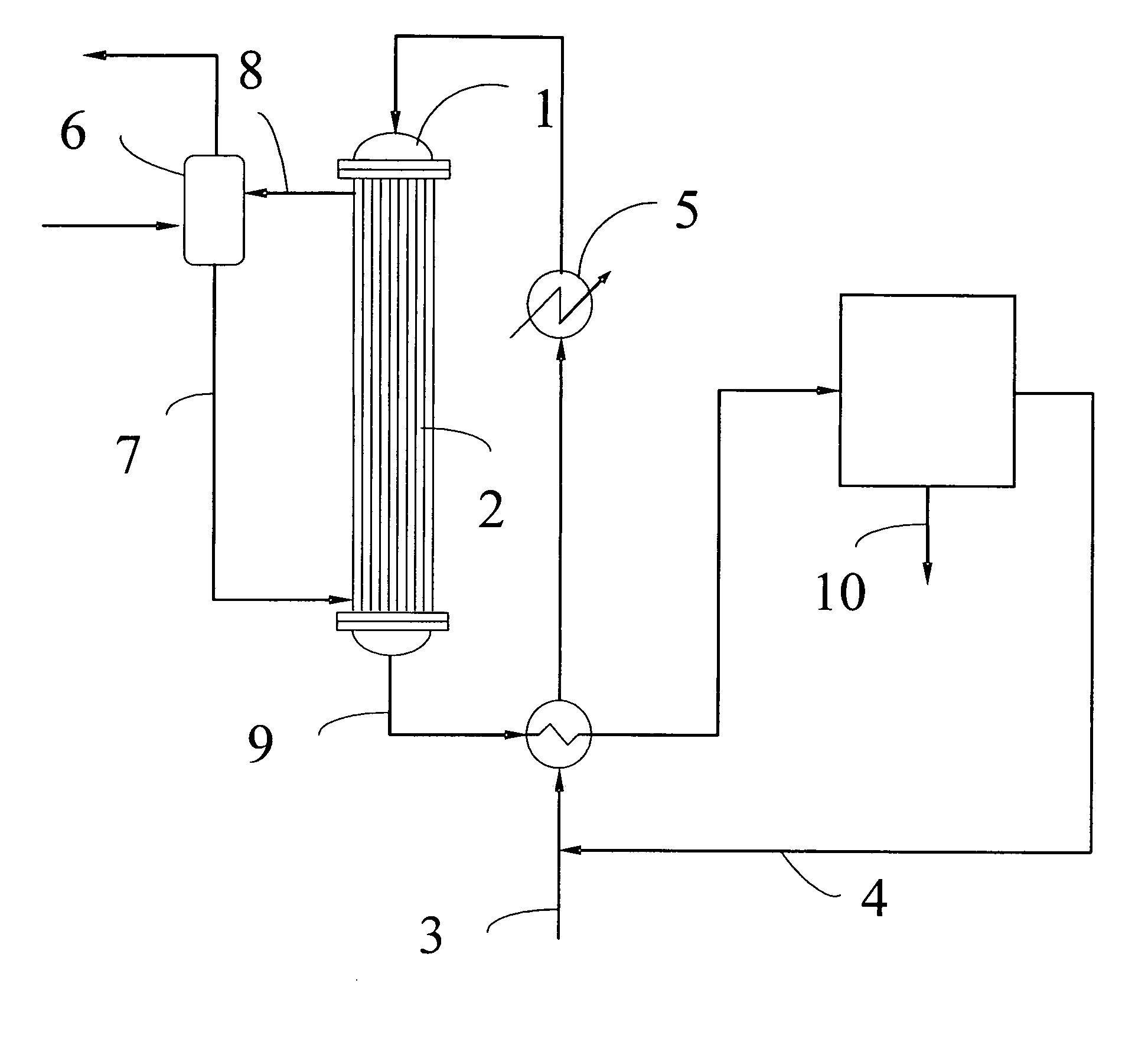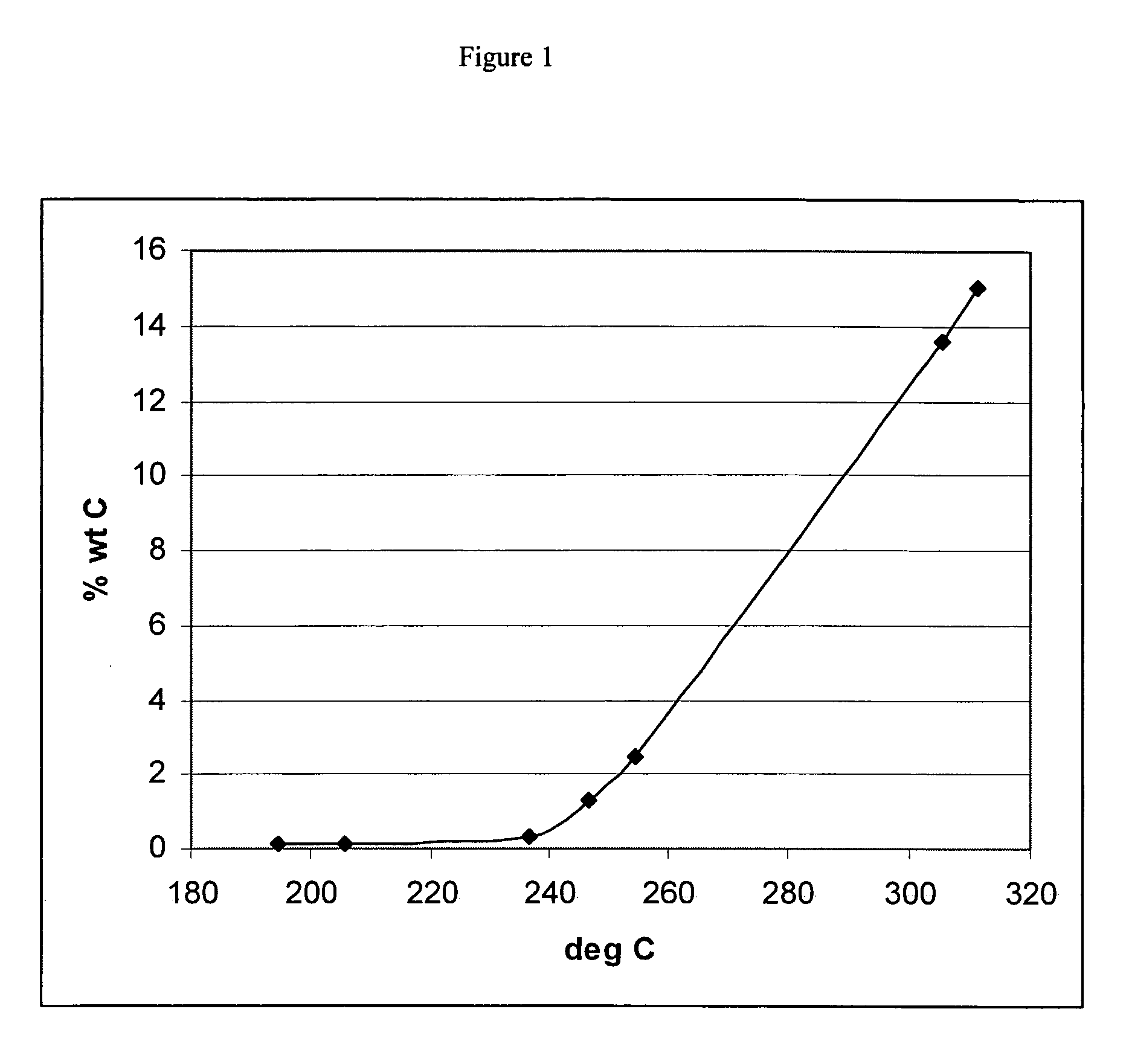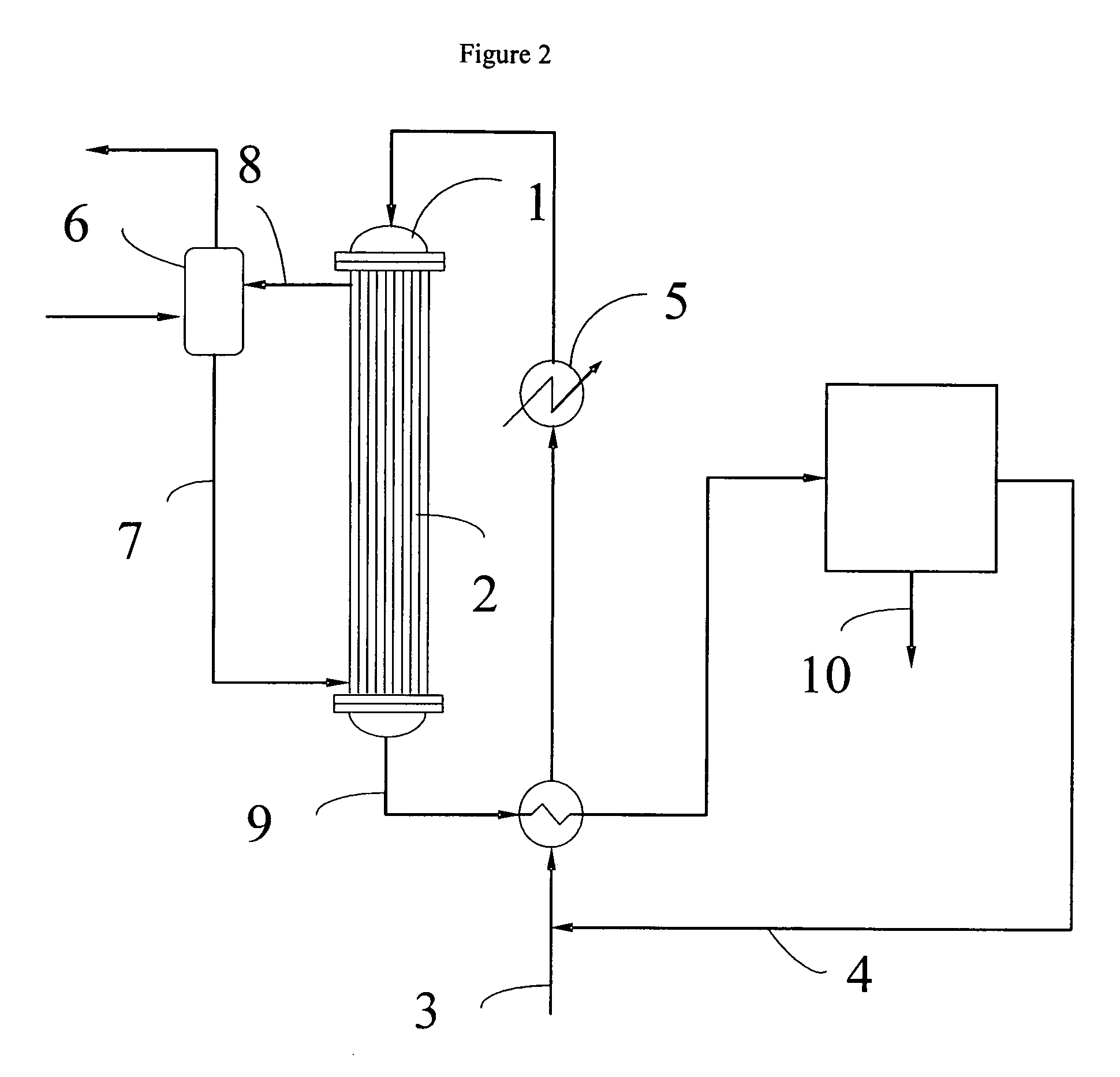Oligomerisation of Olefins
a technology of oligomerization and olefins, which is applied in the field of oligomerisation of olefins, can solve the problems of large heat per unit of mass reaction, deactivation of spa catalyst, and carbonaceous deposits on catalysts
- Summary
- Abstract
- Description
- Claims
- Application Information
AI Technical Summary
Benefits of technology
Problems solved by technology
Method used
Image
Examples
Embodiment Construction
[0038]We have found that control of the peak temperature is critical for satisfactory performance of the oligomerisation of C3 to C6 olefins over a SPA catalyst in a tubular reactor. The peak temperature may be measured by inserting a multipoint thermocouple in at least one of the reactor tubes. Spider-shaped inserts may be used to keep the thermocouple in the center of the tube. It is preferred that the thermocouple can detect the temperature at various locations along a significant portion of the length of the tube, preferably towards the inlet end of the tube. Desirably, temperature is measured over at least the first 50%, or possibly 75% of the length of the tube from the inlet end, and at a plurality of points. For example it is preferred to make measurements at from 10 to 20 points, such as 15 points, in a tube that is 3 to 10 metres (approx 10 to 33 feet) in length. It is preferred and typically sufficient with SPA catalyst to only monitor temperatures in the initial (top) ha...
PUM
 Login to View More
Login to View More Abstract
Description
Claims
Application Information
 Login to View More
Login to View More - R&D
- Intellectual Property
- Life Sciences
- Materials
- Tech Scout
- Unparalleled Data Quality
- Higher Quality Content
- 60% Fewer Hallucinations
Browse by: Latest US Patents, China's latest patents, Technical Efficacy Thesaurus, Application Domain, Technology Topic, Popular Technical Reports.
© 2025 PatSnap. All rights reserved.Legal|Privacy policy|Modern Slavery Act Transparency Statement|Sitemap|About US| Contact US: help@patsnap.com



